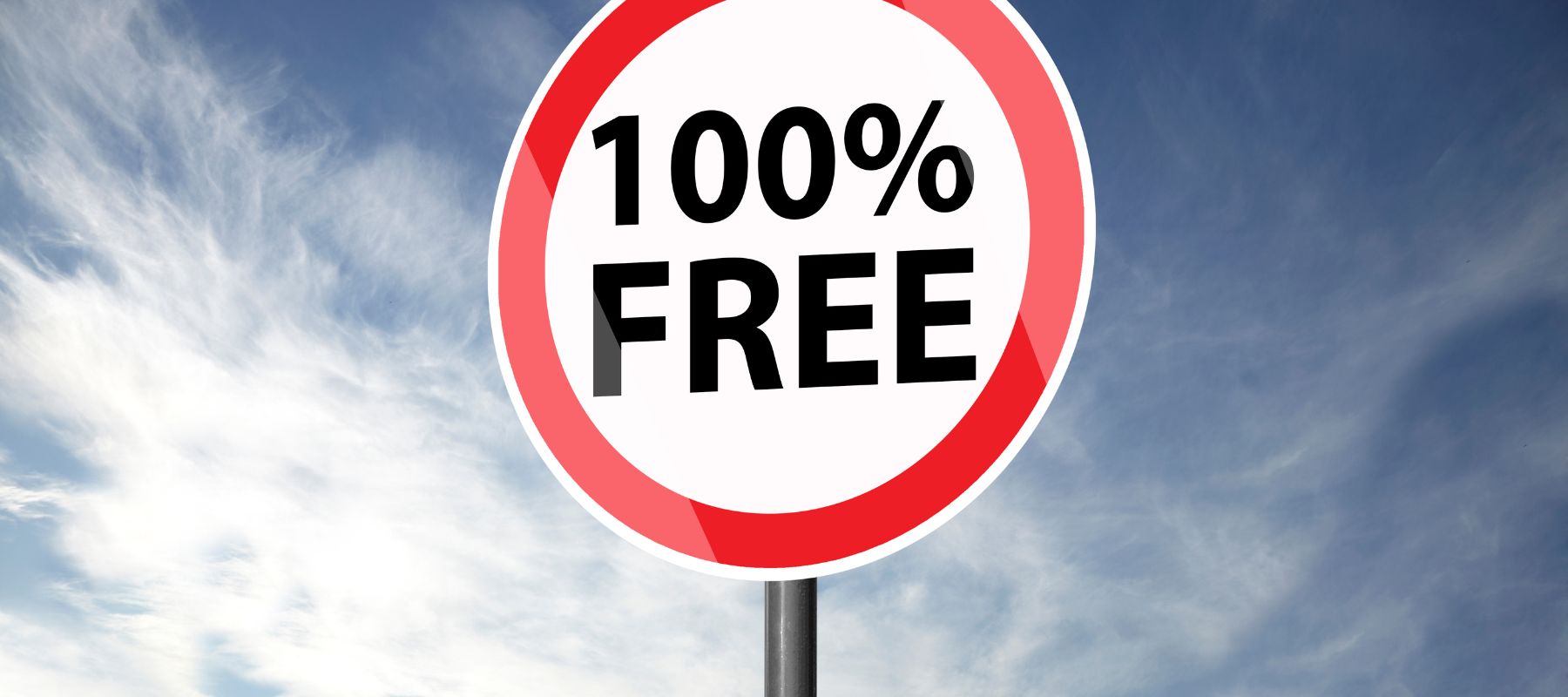Exploring 'Free' Visuals: Unpacking The Language Of Cost-Free Digital Images
Have you ever stopped to really think about the word "free"? It's a word we see all over the place, isn't it? From a cup of coffee at a new cafe to a software download, the idea of getting something without paying anything can feel quite appealing. Yet, when we consider what "free" truly means, especially when it comes to visual content online, there's a whole world of linguistic nuance and practical implications that, you know, we often just gloss over.
There's a fascinating discussion among language lovers about how we use "free." Is it "free of charge," "for free," or even "at no cost"? A friend of mine, actually, once claimed that "for free" was simply incorrect, suggesting we should only say "at no cost" instead. But as linguists and word enthusiasts often point out, language is a living thing, and what's common usage often shapes what's considered correct, apparently.
So, when we come across phrases like "free undress photo" – and we're talking about the *idea* of something being offered without payment, not the specific content – it prompts us to look a little closer. What does "free" truly signify in the digital landscape, particularly for visual materials? And how do our everyday expressions about things being "cost-free" really stack up against how language is actually used? We'll explore this and, you know, a bit more.
Table of Contents
- The Many Meanings of 'Free': A Linguistic Lens
- When 'Free' Isn't So Simple: The Hidden Aspects of Cost-Free Content
- Digital Content and the 'No Cost' Question: What It Means for Images
- Linguistic Insights into 'Free' Visuals: A Deeper Look at Language
- Frequently Asked Questions About the Word 'Free'
The Many Meanings of 'Free': A Linguistic Lens
The word "free" is, quite honestly, a bit of a chameleon in the English language. It changes its colors depending on the context, and that's something linguists find incredibly interesting. For instance, when we talk about prices, "free" means "without cost or payment." This is the sense we usually think of when we hear about "free promotional items" or a drink that's "on the house," so.
There's a debate, actually, about phrases like "free of charge" versus "for free." My text mentions that "free of charges" is much less common than "free of charge," suggesting one usage has simply become more established. This isn't about one being inherently "correct" and the other "incorrect" in some absolute sense, but rather about what people actually say and write. It's almost a rule in search of actual usage, a prescription rather than a description, you know, for how language really works.
We also have synonyms like "complimentary" and "at no cost." My colleagues, it's true, were arguing about the correct spelling of "complimentary" just the other day, which shows how these words can be a bit tricky. Each of these words or phrases carries a slightly different flavor, even if the core meaning of "no payment required" remains the same. A "complimentary" item might feel a bit more formal or like a gift, while "for free" is often a more informal phrase, as in "these professionals were giving their time for free," a bit.
- How Much Does Patience Wolfe Make
- Faith Adanza
- Best Remoteiot Device Platforms
- Somalia Wasmo
- Pinay Scandal News 2024 Philippines
Then there's the opposite of "free as in free of charge." If we can add "not" for negation, like "not free," we're often looking for a single word that means "requires payment." Words like "paid," "charged," or "costly" come to mind, but there isn't always one perfect, single opposite that fits every situation. It really just depends on the specific situation you're talking about, doesn't it?
When 'Free' Isn't So Simple: The Hidden Aspects of Cost-Free Content
When something is offered "for free," especially online, it's easy to assume there are no strings attached. But, you know, sometimes "free" can have other meanings or come with other considerations. For example, my text mentions "company swag or schwag" – those free promotional items with a company name on them. They're "free" to the recipient, but they serve a purpose for the company, like advertising, apparently.
The choice of prepositions, too, can sometimes give us a clue about hidden contexts. "On ~ afternoon implies that the afternoon is a single point in time," my text notes, which is about temporal context. While not directly about "free," it shows how subtle linguistic choices can change meaning. Similarly, when we talk about "free" digital images, the "temporal context" might involve how long they're available for free, or what conditions apply over time, that.
There's also the concept of value. If something is given "for free," does that mean it has no value? Not at all. Professionals "giving their time for free" are offering something incredibly valuable, their expertise and effort, without direct payment. This is a crucial point when we think about digital content, especially visual works. The creator put time, skill, and effort into it, even if you don't pay money to access it, you know, just a little.
Reputation, too, plays a part. On Q&A sites, "upvoting indicates when questions and answers are useful," and you gain "reputation points" for being helpful. This "free" exchange of information and help builds a kind of social currency. So, while you're not paying money, there's a system of value and recognition at play, which is quite interesting, really.
Digital Content and the 'No Cost' Question: What It Means for Images
In the digital space, the idea of "free" content, including visual content, is everywhere. You can find vast libraries of images that are "free to use," often under specific licenses. This means you don't have to pay a fee, but you might need to credit the creator or use the image only for non-commercial purposes, for example. It's not truly "free" in the sense of being completely unrestricted, so.
When we think about phrases like "free undress photo" – again, focusing on the *linguistic structure* of "free" applied to "visual content" – it brings up important questions about digital ethics and the value of visual works. If something is offered "for free," what are the underlying intentions? Is it for promotion, for sharing, or is there some other exchange happening? It's a bit like "on the house" at a bar; the drink is free, but it encourages you to stay, or perhaps buy more later, basically.
The sheer volume of "free" digital images available online has, in a way, changed our perception of value. People might expect to find almost any image without paying, because so much is readily accessible. This impressive rise of "free of" against "free from" in general usage for other contexts, as my text points out, mirrors a broader societal shift towards expecting things without direct monetary cost, you know, in some respects.
However, the concept of "free" also has its limits. Just because something is accessible without payment doesn't mean it's without ownership or rules. Intellectual property rights still apply. So, while you might not pay money for a digital image, using it inappropriately can still have consequences. It's a complex balance between accessibility and respect for creation, isn't it?
Linguistic Insights into 'Free' Visuals: A Deeper Look at Language
Let's really dig into the language here. When we talk about something being "free," we're often describing a state of being unburdened by cost. The "Q&A for linguists, etymologists, and serious English language enthusiasts" mentioned in my text is precisely the kind of forum where these nuances are explored. They might discuss how the word "free" has evolved, or why certain prepositions pair with it better than others, really.
Consider the phrase "free undress photo." If we "undress" the language itself, we're stripping away assumptions to get to the core meaning. "Undress" as a verb means to remove clothing, but metaphorically, it can mean to reveal, to expose, or to strip something down to its essence. So, a "free undress photo" could, in a highly abstract linguistic sense, refer to an image that "undresses" a concept, revealing its true nature without cost, you know, just a little.
The informal nature of "for free" versus the more formal "at no cost" or "free of charge" is a good example of how language adapts to different social settings. "For free" is considered kind of trendy in some circles, but you might not use it in a formal report. This shows that the choice of words for "cost-free" items, including images, often depends on the audience and the context, actually.
There's also the idea of "no difference in meaning" between phrases, even if one is less common. My text suggests that "free of charges is much less common than free of charge," but implies they mean the same thing. This highlights that while usage trends exist, the core message of "no payment" remains. So, when you encounter "free" attached to any visual content, the primary message is usually about the lack of monetary transaction, apparently.
Frequently Asked Questions About the Word 'Free'
Is "for free" truly incorrect, or is it acceptable in modern English?
While some people might argue that "for free" is less formal or even incorrect, it's actually widely accepted in common usage today. My text notes that it's an "informal phrase used to mean without cost or payment." Language evolves, and what's common often becomes standard. So, you know, it's perfectly fine in most everyday conversations and even some writing.
What's the best way to say "without cost" in a formal setting?
For more formal situations, phrases like "at no cost" or "free of charge" are generally preferred. My text points out that "free of charge" is much more common than "free of charges," and it carries a clear, professional tone. "Complimentary" is another excellent choice, especially if you're talking about something given as a courtesy or bonus, really.
How does "on the house" relate to the concept of "free"?
"On the house" is, you know, a very specific synonym for "free" that typically applies to food or drinks offered by an establishment, like a bar or restaurant. My text explains it's "because of its usage in bars across the United States and other English speaking countries to describe free drinks." It implies the establishment is covering the cost as a gesture, usually to a customer, a bit.
When we consider the many ways we talk about things being "free" – whether it's "for free," "at no cost," or "on the house" – we see how rich and flexible our language truly is. The discussion around "free" digital images, then, becomes not just about cost, but about the very words we choose to describe them. To learn more about linguistic nuances on our site, and to explore how language shapes our perceptions, check out this page here.

Free Online DBA Program Opportunities - Swiss School of Business and Management Geneva

Free PNG

Is free the wave of the future for job boards? - Job Board Doctor